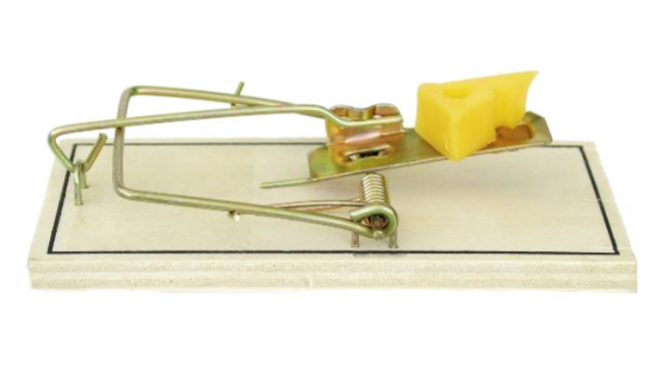- Did you know that 90 percent of the confirmed Rat Lungworm cases in Hawai‘i are found in people from East Hawai‘i?
- That you should remove lettuce leaves by hand before washing them, not chop them off the core? (That one stopped me, careful me, in my tracks.)
We have a guest post today written by Marlena Castro Dixon, M.S., an epidemiological specialist with the Hawai‘i State Department of Health, Hawaii District Health office.
Marlena was born and raised in Hilo and received her education from the University of New Mexico. She works for the Disease Outbreak Control Division, Disease Investigation Branch.
She’s well qualified to tell us about Rat Lungworm disease, which, of course, is especially prevalent here on the Big Island. She tells us what it is, how it happens, and especially how to prevent it.
Rat Lungworm Disease in Hawai‘i
by Marlene Castro Dixon, M.S.
One of the benefits of living in Hawaii’s great climate is having access to fresh produce year-round. However, a rare disease called Angiostrongyliasis or Rat Lungworm Disease (RLWD) has gained the attention of the community, especially on the Big Island. The severity and symptoms of Rat Lungworm disease varies from person to person and can be a very devastating illness to the patient and their families.
RLWD can affect anyone — residents, farmers, visitors, even other animals such as dogs. All face the risk, especially if they are not aware of this illness. Prevention is crucial, so that all can enjoy our local produce without being infected with the Rat Lungworm. RLWD cannot be passed from human to human, making prevention crucial.
There are lots of facts to know, but understanding how this disease transmits from rats and other vectors to humans is important. RLWD is caused by a parasite, Angiostrongylus cantonensis. Adult worms reside in the lungs of rats, hence the name “Rat Lungworm.” Infected rats pass the larvae in their feces which are then passed onto hosts such as slugs, snails, fresh water prawns, crabs, flatworms, frogs and other vectors by consuming the infected feces. Humans can become infected when they eat raw produce containing slugs or snails or eat undercooked fresh water shrimp or crab, other infected vectors or contaminated water.
Once consumed by a human, the larvae cannot finish their lifecycle. The parasites invade the nervous system and the brain tissue, causing specific neurologic symptoms depending on where in the brain they migrate. Neurologic symptoms such as parasthesia, hyperesthesia (severe sensitivity to the touch) skin pain, sensitivity or numbness, and photophobia subside as initial damage is done by the migration of the worms.
Secondary damage is done by the inflammatory response to the presence of dead and dying worms. This inflammatory response causes swelling of the protective covering of the brain and the spinal cord, a condition known as Eosinophilic Meningitis. As previously mentioned, symptoms will vary from person to person, making Angiostrongyliasis or Rat Lungworm disease very difficult to diagnose.
Diagnosis of the disease can be difficult and involves an extensive look at the patient’s food history and possible environmental exposures. Currently, the only way to test and confirm a case of RLWD is through a spinal tap. Due to its invasive nature, not all patients come in for testing. As a result, some potentially infected patients are not seeking a proper diagnosis, which has contributed to the low number of confirmed cases.
Between 2007 and 2014, Hawaii has had 42 confirmed cases of RLWD. However, the Big Island of Hawaii, particularly the east side, is disproportionately affected by Rat Lungworm Disease, accounting for approximately 90% of these cases. Because of this, the Department of Health (DOH) partners with other agencies to work on educating the public in various ways to be sure there is public awareness, allowing residents and visitors to enjoy our local produce safely.
The DOH has also worked on things like testing for RLWD locally. The DOH can now test for RLWD here in Hawaii, instead of having to send specimens to the CDC, enabling physicians to make a diagnosis and treat the patient earlier. Despite our efforts, we still have a long way to go.
Fortunately, there are precautions that can prevent transmission of the disease. Always carefully rinse fresh produce with potable water, and discard any that looks like it may have the presence of slugs or snails. It’s easier than you might think to miss a tiny creature in the folds of a leafy vegetable. For leafy greens, open up, peel off each leaf (do not chop off the core), and rinse each leaf one by one to the base of the stems. Visually inspect the produce while rinsing. Use a steady stream of water as there currently is no product or solution to wash your produce that will kill this parasite.
Cooking vegetables will kill the parasite. Boil snails, freshwater prawns, crabs and frogs for at least 3-5 minutes. Never handle slugs and snails with your bare hands. Control the slugs and snails on your property as well as the rodent population. Proper filtering and maintenance of catchment tanks and a proper cover is important for prevention as the parasite can survive in water. Prevent children from putting objects in their mouths, especially when playing outside. Bring food and water dishes for your pets indoors at night if possible.
Whether visiting or living in Hawaii, enjoy the local food, but know the exposure risks and keep in mind that there are preventative measures that can prevent a devastating disease from harming you and your family.
For more information, please visit:
Angiostrongyliasis, or ANGIOSTRONGYLIASIS (RAT LUNGWORM)
or call 808-586-4586.
For details on slug and snail control visit: Control and management of slug and snail vectors, with special reference to species in Hawaii.

